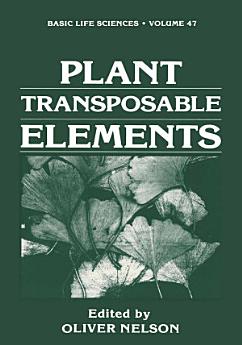Plant Transposable Elements
O. Nelson
ธ.ค. 2012 · Basic Life Sciences หนังสือเล่มที่ 47 · Springer Science & Business Media
eBook
404
หน้า
reportคะแนนและรีวิวไม่ได้รับการตรวจสอบยืนยัน ดูข้อมูลเพิ่มเติม
เกี่ยวกับ eBook เล่มนี้
Transposon tagging can work. Even though most of our understand ing about the factors that contribute to a successful tagging experiment has been accumulated from a limited number of experiments using different transposable elements in different genetic backgrounds, it is still possible to draw some conclusions regarding the best experimental strategies for gene tagging. In our experience, Spm has proved to be a good element for transposon tagging. The frequency of recovering mutable alleles in duced by Spm is not significantly different from that for Ac-Ds or for Mu 6 (summarized in Ref. 22) and varies from about 10- to 10=zr:-8pm has the unique advantage, however, in that all of the members of thiSfumily that have been examined thus far are homologous to each other at the DNA level. Therefore, by combining molecular analysis with genetic segre gation, it is possible to identify and isolate alleles that are due to insertions of either autonomous or nonautonomous Spm elements. There are definite steps one can take to increase the chances of de tecting a transposition into the gene of interest. The most important step is to select a genetic background in which the desired phenotype will be easy to screen. If the phenotype is not likely to be mutable, then tester lines should be constructed so as to contain flanking markers that can aid in subsequent segregation analyses.
ให้คะแนน eBook นี้
แสดงความเห็นของคุณให้เรารับรู้
ข้อมูลในการอ่าน
สมาร์ทโฟนและแท็บเล็ต
ติดตั้งแอป Google Play Books สำหรับ Android และ iPad/iPhone แอปจะซิงค์โดยอัตโนมัติกับบัญชีของคุณ และช่วยให้คุณอ่านแบบออนไลน์หรือออฟไลน์ได้ทุกที่
แล็ปท็อปและคอมพิวเตอร์
คุณฟังหนังสือเสียงที่ซื้อจาก Google Play โดยใช้เว็บเบราว์เซอร์ในคอมพิวเตอร์ได้
eReader และอุปกรณ์อื่นๆ
หากต้องการอ่านบนอุปกรณ์ e-ink เช่น Kobo eReader คุณจะต้องดาวน์โหลดและโอนไฟล์ไปยังอุปกรณ์ของคุณ โปรดทำตามวิธีการอย่างละเอียดในศูนย์ช่วยเหลือเพื่อโอนไฟล์ไปยัง eReader ที่รองรับ







